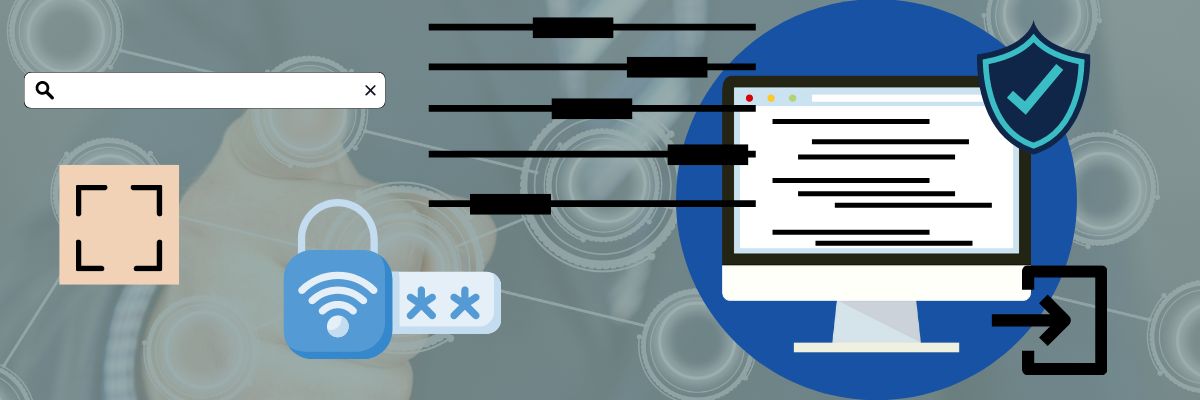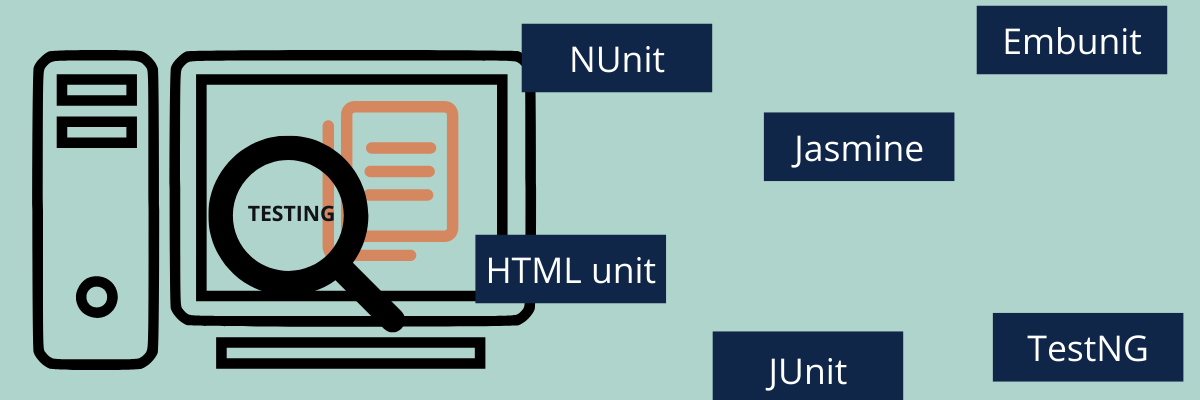Unit testing is a popular practice in the field of software testing that helps developers find bugs in the code so that they can be fixed early in order to provide the best product to your end-users
It is an integral part of the software development workflow that affects your code quality.
Unit testing verifies the behavior of your code in response to the boundary, standard, and incorrect cases of the input data. It also will check the implicit and explicit assumptions made by the code, if any.
Nevertheless, unit testing is a detailed procedure with multiple steps. When you share the final product with your client, you must ensure there are no mistakes, and it performs as per the client’s expectations.
Therefore, testing before submission of the work is necessary to ensure this and reflect your standard of work. It is also a valuable skill to learn.
So, let’s understand what unit testing is and why it is important for organizations and developers.
What is Unit Testing?

Unit testing is an essential part of the software development process that tests individual components of the application or software program to catch the bug easily. The main purpose of unit testing is to check every individual part is working as per the client’s requirements. It can have many inputs but a single output.
When a developer writes a program, the entire program is divided into various testable units to check the source code. Thus, unit testing checks every procedure, method, or function and tests for both object-oriented and procedural programming. It is useful when re-writing or refactoring a piece of code.
In simple words, unit testing is a software development testing procedure where a “unit” refers to an individual component that needs to be tested to know the quality of the code.
Furthermore, you will find various unit testing frameworks for different programming languages, such as C or C++, Python, C#, Java, JavaScript, and more. Some of the unit testing frameworks are JEST, AVA, NUnit, unittest, JUnit, TestNG, Embunit, HtmlUnit, and a lot more.
What are the types of Unit Testing?
If we talk about only software testing, there are many types, and unit testing is one of them. Unit testing is further divided into two types. Let’s discuss them one by one.
Manual testing: In manual unit testing, a developer writes code to test a particular section by interacting with the APIs or software in person to catch the bugs. This is a bit expensive and time-consuming task as it requires someone to work in such an environment to test individual components of the software. This may lead to human error, such as typo errors, steps omission, and more.
Automated testing: The machine performs the same task of unit testing and executes the test script previously written. With automated unit testing, you can test a single sequence or complex sequence that yields the same result.

It is more reliable and powerful than manual testing. Thus, maximum organizations use an automated approach to test their software. But there is a small limitation, i.e., quality issues. The quality ultimately depends upon the pre-written code.
You can refer to this as the key component of regular integration and delivery that scales your QA process whenever you add new features to the application.
Why is Unit Testing important?
The main purpose of unit testing is to segregate every part of the program so that you can test if every part of the software is working properly without any error. Due to the isolation of each part, it can easily determine the exact behavior of your code according to your expectation.
Some of the benefits of unit testing are:
Quality of Code
Unit testing enhances the quality of the code. It allows developers to verify all the defects that are present in the units before deployment. It also exposes even the smallest edge cases and makes you write better code with confidence.
Furthermore, when you test your code, sometimes it forces you to think differently while performing individual testing. This can lead to better design ideas. It is similar to the proofreading process that let you enhance your code style.
Agile Process
Unit testing makes your coding process more agile. Whenever you add new features to your software, you may need to change some of the codes already tested through unit testing. This can be costly and risky. But if you have the tests in place, you can refactor code confidently.
Early Bug Detection

Catching bugs before the integration process is always beneficial and time-saving. Since developers write codes for unit testing, issues can be found early, which can be further resolved by the developer in the early stages. This will save time, and the quality of the code will improve.
Proper Documentation
A developer understands the basic unit’s interface and how to use the testing programs to check individual parts of the code. This way, a developer can also learn every functionality of the unit code and ensure that the software behaves as expected.
Low Costs
Since you can easily find bugs in the development stage, unit testing costs you less. Imagine a situation where you find a bug during later stages of development, say during acceptance testing or system testing. It costs you more to fix as you have to change a bigger part. Early detection will not only reduce your costs but also saves you time.
What are the different Unit Testing techniques?

Unit testing works on every part of a program to catch unexpected bugs or errors so that the complete program can be transferred to the testing process. To accelerate the work, it uses three techniques:
#1. White-Box Testing
White-box testing is also known as transparent or glass-box testing. Here, the tester knows the internal functionality. So, it involves testing the functional aspects of a software solution or application. The working process involves input, processing, proper test planning, and output or final report.
#2. Black-Box Testing
This type of testing involves testing the user interface of your software solution along with the input as well as the output. It checks the scenario of the system.
For example, a user is not receiving an error message while entering an incorrect password, or a user might be entering the password in the wrong format.
#3. Gray-Box Testing
Gray-box testing is referred to as semi-transparent testing. It is a combination of white-box and black-box testing. Here, the user is partially aware of the software’s internal functionality. It involves multiple testing, including matrix testing, pattern testing, regression testing, and orthogonal pattern testing.
How to write a Unit Test?

Well, writing a unit test code is similar to developing any code, but with some differences. You create a large program to solve the problems of the users, but you create unit test code to solve problems in your own program.
Basically, you are your own customer when it comes to unit testing. You must think like you are the customer and test each individual part to fulfill your expectation. Since you are the creator of the code, you can easily know where to make changes for a better outcome.
- First, understand the requirements of each code you are going to test and give it a method name.
- Then, you must fix some test parameters and ensure every test produces the expected result. Avoid test class hierarchies, but you can use setup methods as well as nested utility classes.
- Follow the arrange, act, and assert pattern and start writing the test.
Do the same for each part of the larger program and write effective code to test your own code. Figure out the issues and get to the point immediately.
What are the limitations of Unit Testing?

Although unit testing is one of the types of software testing, it takes a longer time than usual to test even a single part, let alone the larger and more complex codes.
So, it might be unable to catch all the errors in your program. It can, however, catch functionality errors but may fail at catching performance issues, system-wide issues, or integration errors. Unit testing is only effective when you use it with other software testing methods.
The main limitation is that it can’t show the absence of errors. It can only show the presence like other types of testing. You have to keep rigorous records of the unit test code so that you can use them throughout the testing process.
Moreover, it is not possible to test all the possible combinations on the input side for any software without automated characterization. You need to focus on the large programs in order to test each corner of your code, which is definitely tiresome.
Let’s see the real disadvantages in brief:
- It will take significant time in writing test cases.
- It is obviously difficult to write unit tests for legacy code.
- Maintenance is required.
- Testing GUI code is way challenging.
- It can fail to catch all the errors in your code.
Unit Testing vs. Functional Testing: Difference

Unit testing and functional testing both are the foundation of the software testing process. Both have their own meaning in the field that showcases their individual advantages. But the main difference between the two is that unit testing is performed by the software developers themselves, whereas functional testing is performed by the software tester during system testing.
Let’s find out their key differences:
#1. Unit testing tests the units of your code by isolating individual parts of the software. On the other hand, functional testing tests the whole program functions according to the user requirements.
#2. Unit testing code is easy to write plus execute for the next step. It comes under the white-box technique. The main purpose behind testing is to isolate every unit or module in the code to test each individual.
On the contrary, writing a functional test code is more complex. It comes under the black-box testing technique. The main purpose of functional testing is to test the entire software application’s functionality.
#3. Unit testing can cover edge cases and code branches. But you need to write a large number of test cases to test each corner.
In functional testing, you do not need to write a higher number of testing cases. It covers application or software functionality.
#4. Unit testing has a low maintenance cost. Here, a developer writes the code in the same programming language. It also depends upon the number of lines of code.
However, the maintenance cost for functional testing is higher than unit testing. To test the functionality, a tester doesn’t need the same programming language to write codes. This test covers the requirements of the end-users.
#5. Whenever you change a single thing, like adding new features or removing any unnecessary add-ons, you need to change the unit test code also. You will write unit test code in the development phase. As said earlier, it is written by developers to test their programs.
In contrast, the functional test code is written by testers after the development stage. You can use this test when you test the functionality of each feature. A little change in the software doesn’t affect much on the functionality side.
#6. Popular tools for writing unit tests are Mockito, TestNG, NUnit, JUnit, and more. On the other hand, some popular tools for writing functional tests are SahiPro, UFT, Selenium, and more.
Some Popular Unit Testing Tools

- NUnit: It is a unit testing tool or framework based on the .NET platform that allows you to write test scripts manually for free. Also, it supports data-driven tests.
- JUnit: It is an open-source testing framework for unit tests that helps Java developers to write and execute repeatable tests. It works the same way as NUnit.
- TestNG: It is again a testing framework especially inspired by NUnit and JUnit. You will find some added functionalities. Moreover, it supports data-driven and parameterized testing.
- Jtest: Jtest is developed by Parasoft and is especially used for testing Java software applications. In addition, it supports static code analysis and claims defect-free coding throughout the software development process.
- EMMA: It is an open-source and free set of tools for measuring and analyzing Java code coverage. You will get support for large-scale software development while handling individual work iteratively and fast.
- PHPUnit: It is a developer-oriented testing tool for PHP that tests small units of your PHP code separately. Also, it includes a lot of flexible and simple assertions that allow the testing of code with ease.
- unittest: unittest is a built-in unit testing framework for testing Python code. It has a simple test runner that lets you run the tests without hassle.
- QUnit: It is a robust testing framework that a developer can use with a frontend. Developers of the JQuery Mobile, JQuery UI libraries, and JQuery prefer the QUnit framework over other tools.
- Puppeteer: It is an awesome test execution tool that is built by the Google team. Here, it provides a headless chrome API for your NodeJS applications.
- Embunit: It is a mostly used unit testing framework for testing C and C++ codes. You will get it for free in the market. It stands for Embedded Unit, which is very easy to use.
Conclusion
Whenever you write large or complex programs, you need unit test modules to check the smallest testable units of your application. During the development process, the developer writes and runs the unit test code to catch bugs easily.
Furthermore, unit testing ensures that when you change the code, it doesn’t break the application; rather, it improves the quality of your software. Overall, with correct unit testing, you can present an excellent application to end-users or your client that meets their expectations.
Next, check out the different types of application testing.
Si quiere puede hacernos una donación por el trabajo que hacemos, lo apreciaremos mucho.
Direcciones de Billetera:
- BTC: 14xsuQRtT3Abek4zgDWZxJXs9VRdwxyPUS
- USDT: TQmV9FyrcpeaZMro3M1yeEHnNjv7xKZDNe
- BNB: 0x2fdb9034507b6d505d351a6f59d877040d0edb0f
- DOGE: D5SZesmFQGYVkE5trYYLF8hNPBgXgYcmrx
También puede seguirnos en nuestras Redes sociales para mantenerse al tanto de los últimos post de la web:
- Telegram
Disclaimer: En Cryptoshitcompra.com no nos hacemos responsables de ninguna inversión de ningún visitante, nosotros simplemente damos información sobre Tokens, juegos NFT y criptomonedas, no recomendamos inversiones


